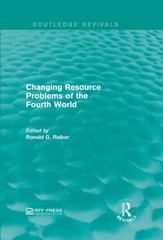plz explain, thx1
c. Is the debt measured by the accumulation of deficits likely to increase or decrease in 1998 and 2014? i. 1998: O Increase O Decrease O Remain same ii. 2014: O Increase O Decrease O Remain same d. What is the gross debt as a percentage of GDP in 1998 and 2014? Express your answer in percentage rounded to the nearest first decimal. i. 1998: ii. 2014: e. If you have all the information needed in the table. compute the real per capita gross debt as a percentageThe following table shows the total government expenditure and income, the gross government debt, the value of financial assets owned by the government and the nominal GDP for two different quarters (Statistics Canada 2020a,b). The government statistics are for all levels of government in Canada and all numbers are in billions of dollars. Year Quarter Expenditure Income Gross Debt Assets GDP 1998 3 408.8 407.6 1175.5 406.5 938.9 2014 3 763.7 772.4 2197.1 1301.0 2013.8 a. What is the government deficit in 1998 in billions of dollars? Round your answer to the nearest first decimal. b. What is the government surplus in 2014 in billions of dollars? Round your answer to the nearest first decimal. c. Is the debt measured by the accumulation of deficits likely to increase or decrease in 1998 and 2014? i. 1998: O Increased. What is the gross debt as a percentage of GDP in 1998 and 2014? Express your answer in percentage rounded to the nearest first decimal. i. 1998: ii. 2014: e. If you have all the information needed in the table, compute the real per capita gross debt as a percentage of real per capita GDP in 1998? Express your answer in percentage rounded to the nearest first decimal. If you don't have the information, leave it blank. f. What is the net debt as a percentage of GDP in 1998 and 2014? Express your answer in percentage rounded to the nearest first decimal. i. 1998: ii. 2014: g. If the government owns 100 billion dollars in non-financial assets in 1998, what is the value of the accumulated deficits in that year in billions of dollars? Round your answer to the nearest first decimal









